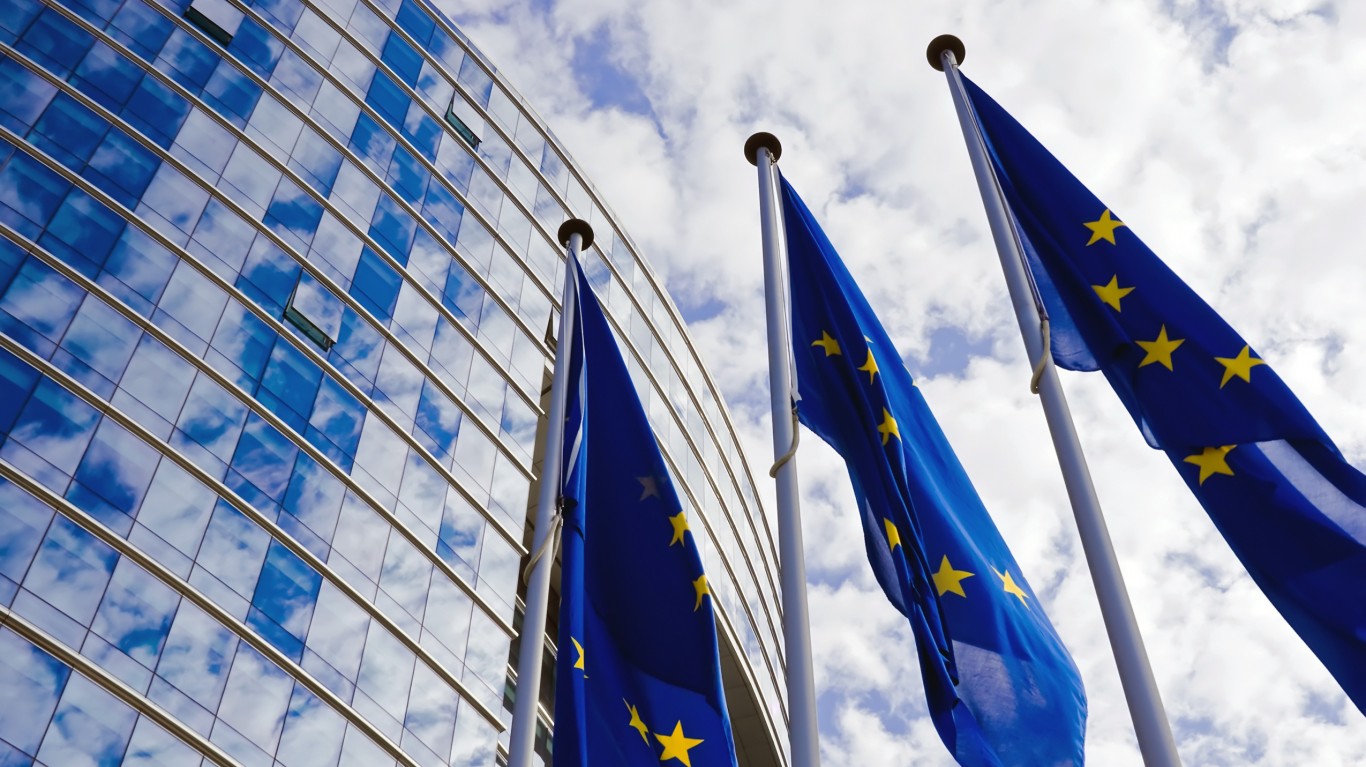Economy
Growing Negative Yields in Europe Bring More Problems for This Week's FOMC Decision on Interest Rates

Published:
Last Updated:

In 2018, it seemed as though Europe would be able to dig out of its slower growth measures and remove its endless quantitative easing with negative interest rates. The fourth quarter of 2018 came and that began to erase, and suddenly there were fears that the recession risks were spreading in Europe. Ending negative interest rates in Europe is mandatory at this time because it means the European Central Bank (ECB) will have almost no ammunition to fight the next recession if it arrives before interest rates do not get back above zero. The problem is that the total value of bonds and notes in Europe with negative interest rates is back on the rise as its economy continues to trickle lower.
This has serious ramifications for Fed Chair Jerome Powell and the U.S. Federal Reserve, with its dual mandate of keeping inflation in check and with keeping policies that will allow for low unemployment rates. This week, on April 30 and May 1, will be the two-day Federal Open Market Committee (FOMC) meeting, in which U.S. interest rate policy and additional guidance will be released.
A note from Deutsche Bank points out that negative yielding notes and bonds in Europe are back above the $10 trillion level. If that sounds high, it’s because that is almost half of the U.S. total deficit — and it appears to be the highest level of negative interest rates in Europe for almost three years.
While negative yields are not systemwide in Europe, they are being seen again in Germany. And Germany is the largest economy in Europe. Ireland and Sweden also have negative rates, and the other countries that made up the PIIGS (Portugal, Italy, Ireland, Greece, Spain) now usually have lower interest rates that they are paying for debt than the mighty United States. Spain’s 10-year government yield is just about 1.00% at the current time, compared with 3.31% for Greece and almost 2.6% for Italy. Unlike the United States, none of those nations now can print money as they could have prior to joining the euro.
There are serious issues the public has in dealing with negative interest rates. Effectively, this means that a lender is loaning money out to the local governments with the promise to receive less money in the future than they surrendered today. It is mind-baffling to many investors.
Another issue is that some corporate credit ratings are high enough that there are even instances in which corporations are getting to borrow money at negative yields in Europe. While rare, this is problematic. That sounds almost no different from a company telling investors that they can buy shares in the company, but the investors have to pay a dividend to the company just for the privilege of getting ownership.
President Mario Draghi and the rest of the members of the European Central Bank already have guided down inflation and growth expectations for 2019, and that in turn has only further delayed the timeline of when the “whatever it takes” rule of quantitative easing can be removed with a somewhat normalized interest rate environment.
Consumer confidence and business confidence also has trickled lower in Europe. And as the ECB sets bank borrowing and short-term borrowing rates, there is no ECB mechanism that actually regulates the spending and tax levels of each nation (at least until emergency funding is necessary).
Now consider what negative interest rates in Europe mean versus the U.S. Treasury. The yield on the five-year Treasury note was last seen at about 2.30%, compared to 2.51% for the 10-year and 2.92% for the 30-year. Even considering the last 3.2% gross domestic product reading for the first quarter of 2019 in the United States, should there be a 300 basis point spread between U.S. and European debt?
Longer-dated interest rates in Germany ticked back into negative territory in March of 2019, but short-term paper already had been negative. If negative interest rates are going to persist in Europe, and if spreads in Europe versus the United States are going to remain between 200 and 300 basis points, how likely is it that Powell will be able to go back to a rate-hike bias rather than the most recent communication that the Fed is out of the rate-hike business for the rest of 2019.
The current U.S. Treasury yield curve only inverted on a 10-year versus two-year relative look briefly in March, but the current yield curve is so flat that some participants are already expecting the Federal Reserve to give back some of the insurance rate hikes made in 2018 later this year. That is going to be hard to expect if gross domestic product manages to keep posting 3% or so gains, even if some of those gains were due to anomalies.
The CME FedWatch Tool shows a 97% probability that the federal funds rate will remain flat in the 2.25% to 2.50% range for the May 1 FOMC decision, but if you jump forward to December, the current CME FedWatch Tool shows probabilities as 41.0% that fed funds will be down at 2.00% to 2.25%, versus a 36.3% chance that rates will be flat at the current 2.25% to 2.50% range of the present time.
Thank you for reading! Have some feedback for us?
Contact the 24/7 Wall St. editorial team.